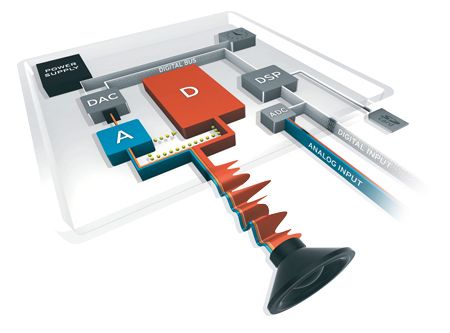Darth Vader
From the Dark Side
No. At the heart of their amplifier is a class A output stage For want of a better description it is a class ADH amplifier. They have replaced the class B stage for the smaller and more efficient class D switching stage. The whole point is that the quality of the output is governed by that class A stage. There is actually a DAC in front of this ADH combo thus any digital input is converted to analogue before it hits the output stage!Devialet work entirely digital. Analogue signal path is about 2cm at the end.
Personally I don't buy into the Devialet story and certainly not for loudspeakers that are stressful to power amplifiers and thus difficult to drive. I also look at pfm members who have had Devialet pass through their HiFi systems as it just doesn't meet their expectations.
For me class D power amplification is great for on the road PA systems as you get a lot of power in a small, light and cheap package. OK for discos and the like but HiFi? Class D is also great for miniaturisation such as portable devices and hearing aids where sound quality is not the main requirement.
Why don't you guys read up on this stuff before posting silly comments on a public web site? From the Devialet web site:-
"....the idea of ADH is to maintain the analogue amplifier's voltage generating function (to maintain their excellent audio performance levels), while entrusting the current generation function, and accordingly, that of generating power for the load, to an amplifier equipped with drastically superior energy efficiency: in this case a digital amplifier, otherwise known as a switch amplifier."
If you believe that marketing guff.........
Cheers,
DV



